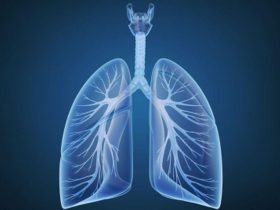Overall, progression-free survival worse for oligometastatic NSCLC patients with versus without detectable ctDNA before radiotherapy
By Elana Gotkine HealthDay Reporter
WEDNESDAY, Oct. 11, 2023 (HealthDay News) — Liquid biopsy, which identifies circulating tumor DNA (ctDNA), performed before radiotherapy (RT) can stratify risk for oligometastatic non-small cell lung cancer (NSCLC) patients, according to a study published online Oct. 2 in npj Precision Oncology to coincide with the annual meeting of the American Society for Radiation Oncology, held from Oct. 1 to 4 in San Diego.
Nicholas P. Semenkovich, M.D., Ph.D., from the Washington University School of Medicine in St. Louis, and colleagues analyzed a cohort of 1,487 patients diagnosed with oligometastatic NSCLC. Each patient underwent at least one liquid biopsy ctDNA analysis for a total of 1,880 ctDNA assays. After liquid biopsy was obtained and oligometastatic NSCLC was diagnosed, 20 percent of the cohort (309 patients) underwent RT.
The researchers found that overall survival was significantly worse for oligometastatic NSCLC patients with versus without detectable ctDNA pre-RT, with median overall survival (OS) of 16.8 and 25 months, respectively (hazard ratio, 1.65). Findings were similar for progression-free survival (PFS), with a median PFS of 5.4 versus 8.8 months (hazard ratio, 1.57). Significant risk correlations were seen for ctDNA variant allele frequency (VAF) levels, with an increased risk for disease progression and death associated with the maximum pre-RT ctDNA VAF. Multivariate Cox proportional hazards modelling for PFS and OS corroborated these findings (hazard ratios, 4.69 and 5.66, respectively). No significant impact was seen for other clinical parameters. There was a significant association observed for the ctDNA mutational burden with risk for PFS and OS (hazard ratios, 1.16 and 1.15, respectively).
“Our findings suggest the level of circulating tumor DNA, rather than the number of tumors themselves, is a more precise measure of disease burden,” senior author Aadel Chaudhuri, M.D., Ph.D., also from Washington University, said in a statement.
Several authors disclosed ties to the biotechnology and pharmaceutical industries.
Copyright © 2023 HealthDay. All rights reserved.







